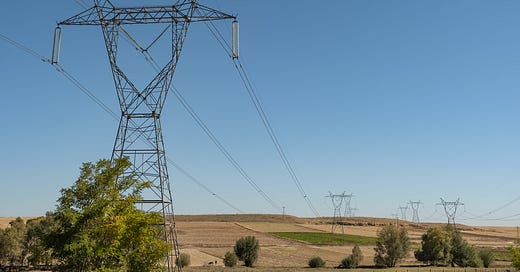Stories Hatch in Silence
At least that’s what I need to go back to find and inhabit memories long enough to form the stories that emerge from them.
When we piled into the Chevy to drive to the farm, I sat on the blue upholstered bench seat in the back, next to Charlie, but we didn’t interact much. Dad and Mom would talk in the front, or Dad would talk and everyone would pretend to listen. Charlie would look out his window inventing song lyrics or stories. He perfected the well-timed “Oh, really?” type of affirmation that kept Dad believing we were fully engaged.
Meanwhile, I stared out my window, watching the trees whiz past, listening for the Doppler effect as we passed sounds that grew loud in an otherworldly pitch, then faded. I counted cows. I studied tiny houses with huge gardens tended by men in overalls or women wearing work clothes like plain cotton dresses, or shorts with tank tops. This was the 1970s, a time of transition where older generations adhered to old styles and younger generations dressed more casually, even a hint of hippie flair.
As we wound our way through the rolling hills of southern Indiana, we passed a section where giant metal utility poles stood tall in the farm fields, cutting across the land for long stretches, as far as the eye could see. I’d tuned out the deep drone of my dad’s repeated Civil War stories that he loved to read about. I inhabited an internal silence where I invented a story.
My imagination stirred up a plot involving a War of the Worlds type of invasion, the tall metal high-voltage beings had straight arms and angry eyes. They lined up like robotic soldiers preparing to annihilate humanity, marching across the state, testing their weapons on these rural communities to see how effective they were against farmers and cattle.
For a few miles, two styles of utility poles holding up power lines sort of criss-crossed. Clearly they landed from different planets and had to battle each other first, diverting their attention from humans to their similarly sized alien beings.
As lasers blasted above the fields, the local people were spared long enough to hide underground in caves as the battling aliens destroyed each other. Who knew how many would survive to turn their attention back to the human race? Who knew when we would have to fight them?
Dad steered the Chevy around a curve and past the Old Folks’ Home, as he called it: a tall brick building that housed poor, elderly people who needed long-term care but couldn’t afford better accommodations.
I always stared at the giant metal tubes attached to the second floor that curved and opened out at the bottom. Slides. One time I asked what those were for, and Dad said that if a fire broke out, the second-story people could slide down to safety.
We never visited, so I imagined the interior, with its high ceilings and tall windows. I saw white curtains wafting in the breeze, and lines of twin-sized beds like an Army hospital, curtains in-between. Those details worked their way into my dreams, and I frequently had nightmares that I was trapped inside and tried to find the slides to escape. Other dreams were pleasant, as I wandered the halls and slid down the fire escape slides just for fun, and nobody minded.
A few years later, when I was about seven years old, Mom and Dad bought a second farm to move us out of town so my brother and I could attend a more conservative rural grade school and high school. My parents were opposed to the open classroom style of teaching in town, worried about its hippie-influence, concerned it would be chaotic and ineffective. So we moved into the farm house ten minutes west of town.
Dad brought a few cattle from the other farm to this new one and started a small herd that grazed two fields. He rented two other fields to an actual farmer who knew how to work the soil, plant, and harvest; year after year we watched that farmer’s choice of crop rotation sprout and grow over the summer: corn, soybeans, hay.
Life in the quiet rural setting offered visual simplicity, like the wall of corn in summer, as well as natural silence, like the songs and cries of red-winged blackbirds, mockingbirds, barn swallows, and hawks soaring overhead.
On this farm, I enjoyed silence. At times this led to loneliness, but I did appreciate the hours of solitude to read, roam, and create.
One afternoon, my neighbor friend was unavailable to play, but by now I was old enough to ride my powder blue banana seat Schwinn bike to the creek down the road.
I waded in and scooped out what felt like clay. The creek water swept away the loose brown soil leaving heavier gray clay in my palms. I rinsed off and carried two or three palms-ful of clay to the white basket of my bike and pedaled home.
There, I sat at the picnic bench and patted out a disc shape to form the base of a pot. I tore off pieces of the clay, rolled out long coils, and formed them into circles to attach to the base. I fetched water to see if I could smooth out the clay as I worked—it was a hot day and the clay was drying out quickly. Eventually, I formed a respectable coil pot from that creekbed clay and let it dry in the summer sun.
As I sit at a computer years later on a summer morning, wind blowing through the leaves of a redbud tree out my white-curtained window, the sun is breaking through clouds. In the quiet of this day, I realize how often silence gave my mind space to imagine, to think, to create.
Now, silence once again opens up space to think, to imagine.
It gives me time to write.
Stories hatch in silence.
At least that’s what I need, to return to the recesses of my mind.
I need silence, and a few minutes alone to take myself back, to inhabit the memory long enough to feel the upholstery of the ’63 Chevy Impala bench seats. . .to remember the red brick “old folks’ home.”
I need silence to picture the utility poles and remember my War of the Worlds storyline that was so vivid I actually felt fear.
I need silence long enough to remember pedaling home, to feel the clay in my hands, smooth, but tearing as it dried. I need to feel my hands dipping into water to work the coil just that little bit more, so it was long enough to curve and meet the other end.
We hatch stories in silence.
They mature, as we work out the details and bring them back to life, shaping them to make sense of ourselves today.
Dip into Your Story Hatchery
1. Set aside time this week when you can be alone and sit in silence, to remember.
2. Make a list of memories that pop into your mind.
3. Pick one, set a timer for 30 minutes and write freely, staying in that space long enough to recall sensory details. What did you feel, smell, taste, see, and hear?
4. Now that the core memory has been hatched, you can return to it later to enhance and edit. For example, I found images of the metal utility poles to include in this post but also to take me back. You might do a little research after you write what you can recall from memory alone.
Want to dive into all the things I offer as a coach? Head over to my Everything Page HERE and discover all the ways we can work together, both free and paid!









I enjoyed your reflection Ann and it has me going back to long car rides with my family. My siblings and I would fight about who had to sit in the middle in the back seat all the time! I used to love and still do, just watching the landscape go by, noticing the colors of sky and land. Sometimes we would play car games to pass the time.
It truly is amazing what a bit of silence and a prompt will bring to the surface.
I enjoyed traveling in the car and making the clay pot with you—though vicariously. I’m reading The Creative Act by Rick Rubin. I just finished a chapter about writing space needs. Silence is a must for many. Others need lots of white noise or music. I find some music helps stir my emotions of the scene. Other scenes require mostly fact and music distracts. The retirement home elicited scary and delightful emotions for you. I wonder what you felt while molding your flowerpot?